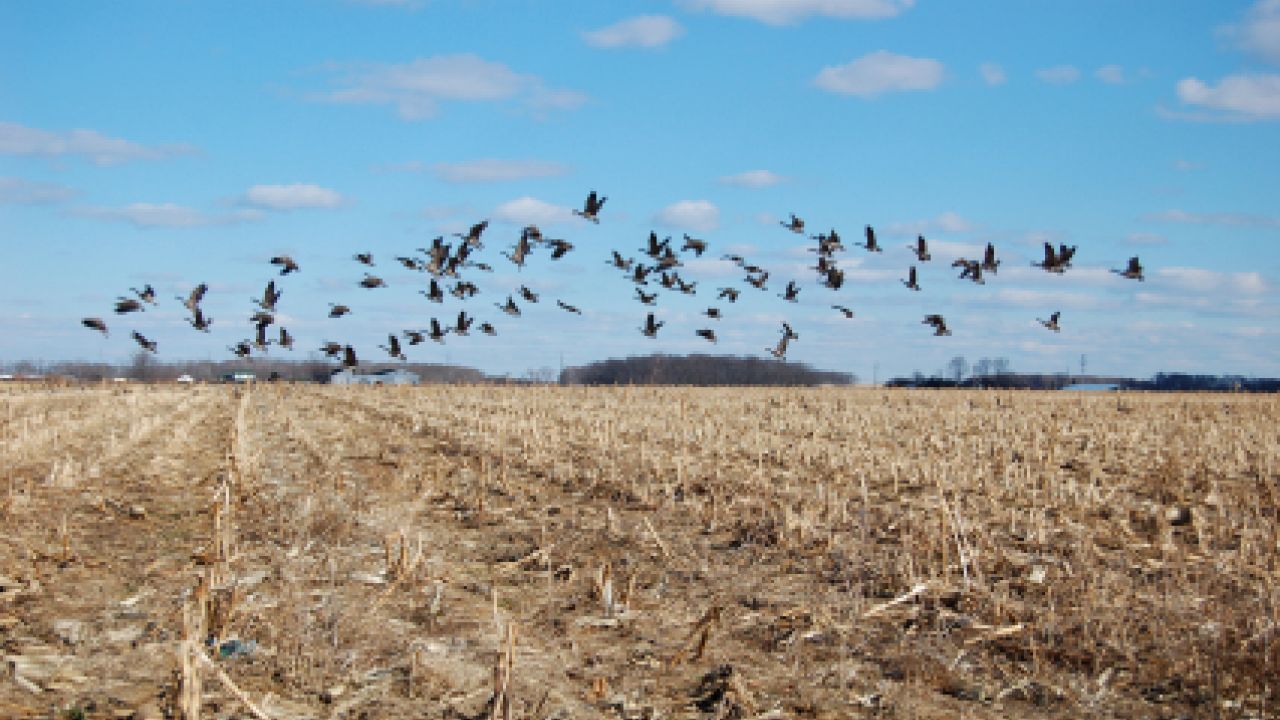
A new National Wildlife Federation report out last week (Jan 13) confirms our worst fears for wildlife habitat in the Midwest.
“Our research shows that native grassland is being converted into cropland at an alarming rate throughout the Prairie Pothole Region,” said Greg Fogel, study co-author and MS/MPP candidate at the University of Michigan. “As a result, populations of sensitive wildlife species are declining significantly in areas with high increases in corn plantings.” According to the report, U.S. ethanol capacity has grown almost 200 percent since the passage of the 2005 Energy Bill, which mandated a large increase in domestic ethanol production. In addition, the updated Renewable Fuel Standard (RFS), passed in 2007, requires corn ethanol production to increase from 10.57 billion gallons in 2009 to 15 billion in 2015. This means corn ethanol production will continue to increase, with no end in sight for the destruction of natural habitat in the Prairie Pothole Region. When researchers analyzed the relationship between corn plantings and grassland bird populations, the results showed that counties with high increases in corn plantings had significant declines of nearly 30 percent in populations of sensitive grassland birds between 2005 and 2008.
The National Corn Grower's response to the NWF report sates that per acre yield increases will take care of everything.
We’re growing more corn with fewer acres. In 2007, farmers grew 150.7 bushels per acre. In 2009, the number rose to 165.2 bushels per acre. It’s time for the opposition to move beyond the arguments that may have been in vogue a few years ago and embrace the new reality.
But corn-ethanol production increased six times faster between 2007-2009 than the 10% increase in yield cited by the the corn grower's. Also, mandates will increase ethanol production by 130% by 2015. Yield increases haven't been enough to blunt the expansion of corn into wildlife habitat so far and the future looks much, much worse. The NCGA argument is akin to telling the survivors of the Titanic not to worry, better radar is on the way. The problem lies with America's federal farm and energy policy with its foot on the gas for commodity crops and ethanol, and nothing but the brake for conservation. This flawed policy ensures profits for big growers, props up a shaky ethanol industry and encourages the plowing up as much wildlife habitat as grain growers can get their hands on. The issue isn't just about dollars vs. birds, however. It's also poised to pit one industry against another. The NWF report should be a wake up call for sportsmen and the recreation industry. Delta Waterfowl's Tori McCormick recognizes the need for hunters and fisherman to wise up to the political realities facing conservation programs that enable robust hunting and fishing habitat across the nation. He wrote on January 18th:
CRP is the Conservation Reserve Program, arguably the most sweepingly beneficial, voluntary private lands conservation initiative ever hatched by the federal government. But the Cadillac of Conservation programs, it seems, is loosing its luster and support. The political class in Washington D.C., among others, is debating its importance and usefulness in this age of bio-fuels and alternative energy. Indeed, we need super-hunters to protect and support the conservation programs that make the most sense for ducks and other wildlife and benefit the most people. CRP is one such program, and its time that hunter-conservationists—super-hunters, if you will—to step up and protect our turf. Contact your elected officials. Write letters to your hometown newspapers. Get engaged. One person can make a difference.
It's not just sporting related businesses that will suffer. McCormick also touches on the economic impact nurturing wildlife habitat through proven conservation programs has had on rural communities through sporting tourism dollars.
Ask the owner of some mom-and-pop greasy spoon in the hinterlands of North Dakota, or South Dakota, or Montana, or any other state, for that matter, if he or she does better when wildlife populations (ducks, pheasants, deer, etc.) populations are high or low. The answer is obvious, and can be linked in most cases to the many direct benefits of CRP. In fact, I’ve seen entire underground economies rise up like a Phoenix thanks in good part to CRP (I once profiled a South Dakota woman who cleaned pheasants, a population buoyed by CRP, for out-of-state hunters to buy Christmas presents for her family and the needy; she literally cleaned hundreds of birds and knew that smart conservation policy benefited more than just hunters).
The economic impact of strong conservation efforts is easy to quantify. According the South Dakota Department of Game Fish and Parks, in 2008 pheasant hunting alone brought $219,600,000 to the state -- $179 million of that from out of state hunters. The sad irony is that rural communities have already been hammered by corporate farm consolidation driven in large part by commodity crop subsidies that encourage big farms to get bigger. Along comes subsidized ethanol threatening hard to come by tourism dollars and its easy to see why some established farm groups are souring on the whole notion of subsidies, recognizing their communities would be better off without them. There's no doubt that the ethanol boom was an economic shot in the arm for some rural communities. But how sustainable is the corn-ethanol economy? Despite big subsidies, the industry has been plagued by a rash of plant bankruptcies and many analysts believe non-ethanol biofuels like algae are the future, as does the Department of Energy. The simple fact is that conservation land that harbors wildlife stands in the way of Big Ag's laser focus on expanding grain acreage to sell to world markets. Unless there's a shift in ideology with the members of Congress who control funding toward a more sustainable farm policy, wild bird populations will continue their dramatic decline in the Midwest.


